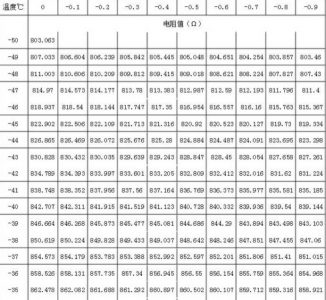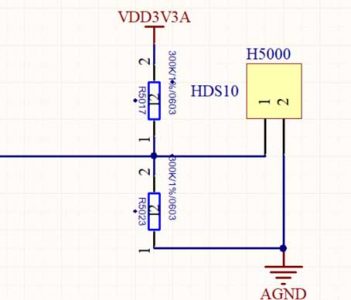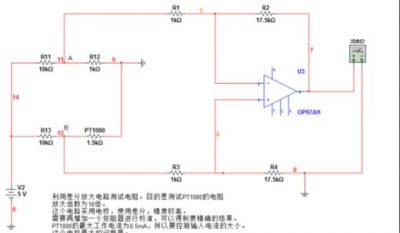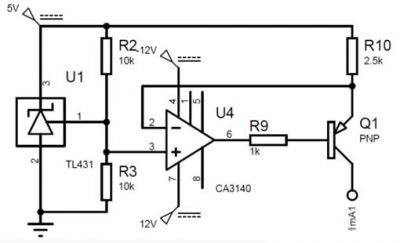1. PT100 and PT1000 temperature resistance change table
Metal thermal resistors such as nickel, copper and platinum resistors have a positive correlation with the change in resistance with temperature. Platinum has the most stable physical and chemical properties and is the most widely used. The temperature measurement range of the commonly used platinum resistor Pt100 is -200~850 ℃. în plus, the temperature measurement ranges of Pt500, Pt1000, etc. sunt reduse succesiv. Pt1000, temperature measurement range -200~420 ℃. Conform standardului internațional IEC751, caracteristicile de temperatură ale rezistenței de platină Pt1000 îndeplinesc următoarele cerințe:

Pt1000 temperature characteristic curve
According to the Pt1000 temperature characteristic curve, the slope of the resistance characteristic curve changes little within the normal operating temperature range (as shown in Figure 1). Through linear fitting, the approximate relationship between resistance and temperature is:
1.1 PT100 Tabelul de schimbare a rezistenței la temperatură

PT100 Tabelul de schimbare a rezistenței la temperatură
1.2 PT1000 temperature resistance change table

PT1000 Temperature Resistance Change Table
2. Commonly used acquisition circuit solutions
2.1 Resistor voltage division output 0~3.3V/3V analog voltage
Single-chip AD port direct acquisition
The temperature measurement circuit voltage output range is 0~3.3V, PT1000 (PT1000 resistance value changes greatly, temperature measurement sensitivity is higher than PT100; PT100 is more suitable for large-scale temperature measurement).

Resistor voltage divider outputs 0~3.3V 3V analog voltage
The simplest way is to use the voltage division method. The voltage is the voltage reference source 4V generated by the TL431 voltage reference source chip, or REF3140 can be used to generate 4.096V as the reference source. The reference source chips also include REF3120, 3125, 3130, 3133, și 3140. The chip uses SOT-32 package and 5V input voltage. The output voltage can be selected according to the required reference voltage. Desigur, according to the normal voltage input range of the MCU AD port, it cannot exceed 3V/3.3V.
2.2 Resistor voltage division output 0~5V analog voltage MCU AD port direct acquisition.
Desigur, some circuits use 5V MCU power supply, and the maximum operating current of PT1000 is 0.5mA, so appropriate resistance value should be used to ensure the normal operation of the components.
De exemplu, the 3.3V in the voltage division schematic diagram above is replaced with 5V. The advantage of this is that the 5V voltage division is more sensitive than 3.3V, and the acquisition is more accurate. Remember, the theoretical calculated output voltage cannot exceed +5V. Otherwise, it will cause damage to the MCU.
2.3 The most commonly used bridge measurement
R11, R12, R13 and Pt1000 are used to form a measuring bridge, where R11=R13=10k, R12=1000R precision resistors. When the resistance value of Pt1000 is not equal to the resistance value of R12, the bridge will output a mV-level voltage difference signal. This voltage difference signal is amplified by the instrument amplifier circuit and outputs the desired voltage signal. This signal can be directly connected to the AD conversion chip or the AD port of the microcontroller.

R11, R12, R13 and Pt1000 are used to form a measurement bridge
The principle of resistance measurement of this circuit:
1) PT1000 is a thermistor. As the temperature changes, the resistance changes basically linearly.
2) At 0 grade, the resistance of PT1000 is 1kΩ, then Ub and Ua are equal, adică, Uba = Ub – Ua = 0.
3) Assuming that at a certain temperature, the resistance of PT1000 is 1.5kΩ, then Ub and Ua are not equal. According to the voltage division principle, we can find out that Uba = Ub – Ua > 0.
4) OP07 is an operational amplifier, and its voltage gain A depends on the external circuit, where A = R2/R1 = 17.5.
5) The output voltage Uo of OP07 = Uba * A. So if we use a voltmeter to measure the output voltage of OP07, we can infer the value of Uab. Since Ua is a known value, we can further calculate the value of Ub. Then, using the voltage division principle, we can calculate the specific resistance value of PT1000. This process can be achieved through software calculation.
6) If we know the resistance value of PT1000 at any temperature, we only need to look up the table based on the resistance value to know the current temperature.
2.4 Constant current source
Due to the self-heating effect of the thermal resistor, the current flowing through the resistor should be as small as possible. În general, the current is expected to be less than 10mA. It has been verified that the self-heating of the platinum resistor PT100 of 1 mW will cause a temperature change of 0.02-0.75℃. Prin urmare, reducing the current of the platinum resistor PT100 can also reduce its temperature change. Cu toate acestea, if the current is too small, it is susceptible to noise interference, so the value is generally 0.5-2 MA, so the constant current source current is selected as a 1mA constant current source.
The chip is selected as the constant voltage source chip TL431, and then converted into a constant current source using current negative feedback. The circuit is shown in the figure
Among them, the operational amplifier CA3140 is used to improve the load capacity of the current source, and the calculation formula for the output current is:
The resistor should be a 0.1% precision resistor. The final output current is 0.996mA, adică, the accuracy is 0.4%.
The constant current source circuit should have the following characteristics

Select the constant voltage source chip TL431
Temperature stability: Since our temperature measurement environment is 0-100℃, the output of the current source should not be sensitive to temperature. The TL431 has an extremely low temperature coefficient and low temperature drift.
Good load regulation: If the current ripple is too large, it will cause reading errors. According to theoretical analysis, since the input voltage varies between 100-138.5mV, and the temperature measurement range is 0-100℃, the temperature measurement accuracy is ±1 degree Celsius, so the output voltage should change by 38.5/100=0.385mV for every 1℃ increase in ambient temperature. In order to ensure that the current fluctuation does not affect the accuracy, consider the most extreme case, at 100 grade Celsius, the resistance value of PT100 should be 138.5R. Then the current ripple should be less than 0.385/138.5=0.000278mA, adică, the current change during the load change should be less than 0.000278mA. In the actual simulation, the current source remains basically unchanged.
3. AD623 acquisition circuit solution

AD623 acquisition PT1000 circuit solution
The principle can refer to the above bridge measurement principle.
Low temperature acquisition:
High temperature acquisition
4. AD620 acquisition circuit solution

AD620 PT100 acquisition solution
AD620 PT100 acquisition solution high temperature (150°):
AD620 PT100 acquisition solution low temperature (-40°):
AD620 PT100 acquisition solution room temperature (20°):
5. PT100 and PT1000 anti-interference filtering analysis
Temperature acquisition in some complex, harsh or special environments will be subject to great interference, mainly including EMI and REI.
De exemplu, in the application of motor temperature acquisition, motor control and high-speed rotation of the motor cause high-frequency disturbances.
There are also a large number of temperature control scenarios inside aviation and aerospace vehicles, which measure and control the power system and environmental control system. The core of temperature control is temperature measurement. Since the resistance of thermistor can change linearly with temperature, using platinum resistance to measure temperature is an effective high-precision temperature measurement method. The main problems are as follows:
1. The resistance on the lead wire is easily introduced, thus affecting the measurement accuracy of the sensor;
2. In some strong electromagnetic interference environments, the interference may be converted into DC output after rectification by the instrument amplifier
Offset error, affecting the measurement accuracy.
5.1 Aerospace airborne PT1000 acquisition circuit

Aerospace airborne PT1000 acquisition circuit
Refer to the design of an airborne PT1000 acquisition circuit for anti-electromagnetic interference in a certain aviation.
A filter is set at the outermost end of the acquisition circuit. The PT1000 acquisition preprocessing circuit is suitable for anti-electromagnetic interference preprocessing of airborne electronic equipment interface;
The specific circuit is:
The +15V input voltage is converted into a +5V high-precision voltage source through a voltage regulator, and the +5V high-precision voltage source is directly connected to the resistor R1.
The other end of the resistor R1 is divided into two paths, one connected to the in-phase input of the op amp, and the other connected to the PT1000 resistor A end through the T-type filter S1. The output of the op amp is connected to the inverting input to form a voltage follower, and the inverting input is connected to the ground port of the voltage regulator to ensure that the voltage at the in-phase input is always zero. After passing through the S2 filter, one end A of the PT1000 resistor is divided into two paths, one path is used as the differential voltage input terminal D through resistor R4, and the other path is connected to AGND through resistor R2. After passing through the S3 filter, the other end B of the PT1000 resistor is divided into two paths, one path is used as the differential voltage input terminal E through resistor R5, and the other path is connected to AGND through resistor R3. D and E are connected through capacitor C3, D is connected to AGND through capacitor C1, and E is connected to AGND through capacitor C2; the precise resistance value of PT1000 can be calculated by measuring the differential voltage between D and E.
The +15V input voltage is converted into a +5V high-precision voltage source through a voltage regulator. The +5V is directly connected to R1. The other end of R1 is divided into two paths, one is connected to the in-phase input terminal of the op amp, and the other is connected to the PT1000 resistor A through the T-type filter S1. The output of the op amp is connected to the inverting input to form a voltage follower, and the inverting input is connected to the ground port of the voltage regulator to ensure that the voltage at the inverting input is always zero. În acest moment, the current flowing through R1 is a constant 0.5mA. The voltage regulator uses AD586TQ/883B, and the op amp uses OP467A.
After passing through the S2 filter, one end A of the PT1000 resistor is divided into two paths, one through resistor R4 as the differential voltage input end D, and one through resistor R2 to AGND; after passing through the S3 filter, the other end B of the PT1000 resistor is divided into two paths, one through resistor R5 as the differential voltage input end E, and one through resistor R3 to AGND. D and E are connected through capacitor C3, D is connected to AGND through capacitor C1, and E is connected to AGND through capacitor C2.
The resistance of R4 and R5 is 4.02k ohms, the resistance of R1 and R2 is 1M ohms, the capacitance of C1 and C2 is 1000pF, and the capacitance of C3 is 0.047uF. R4, R5, C1, C2, and C3 together form an RFI filter network, which completes the low-pass filtering of the input signal, and the objects to be filtered out include the differential mode interference and common mode interference carried in the input differential signal. The calculation of the ‑3dB cutoff frequency of the common mode interference and differential mode interference carried in the input signal is shown in the formula:
Substituting the resistance value into the calculation, the common mode cutoff frequency is 40kHZ, and the differential mode cutoff frequency is 2.6KHZ.
End point B is connected to AGND through the S4 filter. Among them, the filter ground terminals from S1 to S4 are all connected to the aircraft shielding ground. Since the current flowing through PT1000 is a known 0.05mA, the precise resistance value of PT1000 can be calculated by measuring the differential voltage at both ends of D and E.
S1 to S4 use T-type filters, model GTL2012X‑103T801, with a cutoff frequency of 1M±20%. This circuit introduces low-pass filters to the external interface lines and performs RFI filtering on the differential voltage. As a preprocessing circuit for PT1000, it effectively eliminates electromagnetic and RFI radiation interference, which greatly improves the reliability of the collected values. în plus, the voltage is directly measured from both ends of the PT1000 resistor, eliminating the error caused by the lead resistance and improving the accuracy of the resistance value.
5.2 T-type filter
The T-type filter consists of two inductors and capacitors. Both ends of it have high impedance, and its insertion loss performance is similar to that of the π-type filter, but it is not prone to “ringing” and can be used in switching circuits.
 English
English العربية
العربية Български
Български 粤语
粤语 中文(简体)
中文(简体) 中文(漢字)
中文(漢字) Nederlands
Nederlands Suomi
Suomi Français
Français Deutsch
Deutsch Ελληνικά
Ελληνικά Magyar
Magyar Italiano
Italiano 日本語
日本語 한국어
한국어 Polski
Polski Português
Português Română
Română Русский
Русский Slovenščina
Slovenščina Español
Español Svenska
Svenska ภาษาไทย
ภาษาไทย Türkçe
Türkçe Tiếng Việt
Tiếng Việt
